Posts by Breakstone, White & Gluck
National Child Passenger Safety Week: Check for Child Seat Recalls This Year
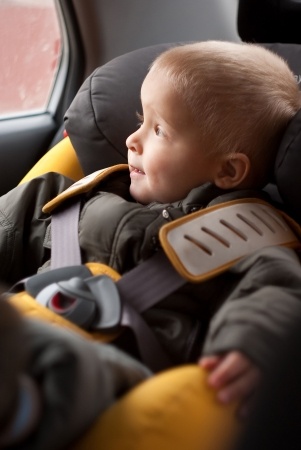 This is National Child Passenger Safety Week, when parents can get answers to common questions about driving safely with their children.
This is National Child Passenger Safety Week, when parents can get answers to common questions about driving safely with their children.
National Child Passenger Safety Week began last weekend and is observed by the National Highway Traffic Safety Administration (NHTSA) and local communities. It ends this weekend with National Seat Check Saturday.
Motor vehicle accidents are one of the leading causes of death for children in the United States. Child safety seats reduce the risk for injury if they are used properly, by more than 70 percent when it comes to infants and more than 50 percent for children age 1 to 4. But parents have long struggled with how to use them. In one study, more than 70 percent of 3,500 observed car and booster seats were misused in a way that could harm children, according to the Centers for Disease Control and Prevention (CDC).
Parents should also closely examine their child safety seat models this year. Several months ago, Graco recalled more than 6 million child safety seats, the largest car seat recall in U.S. history. Parents reported they were unable to unbuckle defective harnesses and had to cut their children out of the straps. The cause was food was getting dried up in the harnesses and causing them to stick.
Child passenger safety laws have changed over the past decade and every state now has a law for infants and children-fitting specific criteria. All but two (Florida and South Dakota) require booster seats for older children. The Massachusetts Child Passenger Safety Law requires children to ride in federally-approved child passenger safety seats that are properly secured until they are eight years old or over 57 inches tall.
Despite laws for older children, Safe Kids, a national non-profit organization, has released a new report, showing 7 in 10 parents did not know a child should be at least 57 inches or 4’9″ tall before they ride in a car without a booster seat. The organization surveyed 1,000 adults.
A few resources on child safety seats:
Check Your Car Seat Label. Become informed about the specifics of car seats. Make sure yours fits your child’s weight, size and age. For infants through age two, look for a rear-facing child safety seat. For children between ages 2 -4 or up to 40 pounds, choose a forward facing child safety seat. From age 4 to 8 or 57 inches, children should ride in belt positioning booster seats. Read more.
Car Safety Seat Checklist for Parents. Safe Kids has developed this checklist for parents.
Register Your Car Seat. Here is a resource from the NHTSA on registering your car seats with the manufacturer. This will allow the manufacturer to contact you if there is a defect.
Used Car Seat Safety Checklist. Here is a resource from the NHTSA on using used child safety seats.
Community Events. Some organizations offer free car seat safety inspections this weekend as part of National Seat Check Saturday and allow parents to make appointments with trained professionals throughout the year. Here is a directory of locations or you can contact your local police department to ask about resources in your community.
Read More
Smoke Alarm Recall Affects More Than One Million
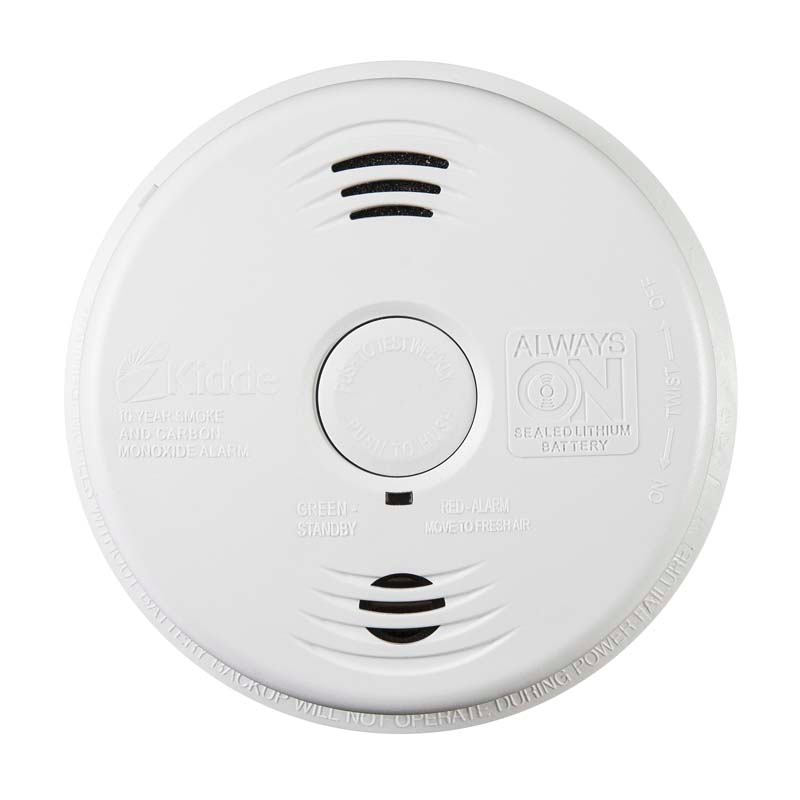 The Consumer Product Safety Commission is calling on the public to check their home smoke alarms, after more than a million units were recalled yesterday.
The Consumer Product Safety Commission is calling on the public to check their home smoke alarms, after more than a million units were recalled yesterday.
Kidde recalled 1.2 million smoke alarms in the United States and 112,000 in Canada. No injuries have been reported, but the models have a defect which may prevent them from working after a power outage. This is an important recall because each year, three to five deaths in property fires come in buildings without working smoke alarms, according to the U.S. Fire Administration.
The smoke alarms are all residential models:
- Kidde residential smoke alarm model i12010S with manufacture dates between December 18, 2013 and May 13, 2014
- Kidde Combination smoke/CO alarm il2010SCO with manufacture dates between December 30, 2013 and May 13, 2014
- Kidde Combination smoke/CO alarm model KN-COSM-IBA with manufacture date between October 22, 2013 and May 13, 2014
These smoke alarms are all hard-wired into a home’s electric system. The i12010S and il2010SCO models come with 10-year batteries inside while the KN-COSM-IBA uses replaceable AA backup batteries.
These smoke alarms look like most: white, round and are about 5 to 6 inches in diameter. Closely inspect the fine print on the front of yours for the word “Kidde.” On the backside, there is a label with the model number and manufacturing dates. “Always on” is also engraved on the front of alarms with sealed 10-year batteries.
These smoke alarms were sold at CED, City Electric Supply, HD Supply, Home Depot, Menards Inc. and other retailers. They were sold online at Amazon.com, HomeDepot.com and shopkidde.com from January 2014 through July 2014 for between $30 and $50.
Smoke Alarm Safety Tips
Daylight Saving Time. We will set our clocks back an hour for Daylight Saving Time on Sunday, November 2. The National Fire Protection Association and other safety officials recommend we also replace the batteries in our smoke alarms, test them to make sure they work and replace any models which are 10 years old.
Monthly Testing. Safety organizations also recommend we test smoke alarm batteries once a month.
Inform Others. Make sure everyone in your home knows what the smoke alarm sounds like and knows where they are located. Here is a resource for more safety and planning information.
Apartment Residents. If you rent an apartment, ask your building management company or property owner to show you the smoke alarms when you sign the lease. Contact them whenever you suspect a problem or have a question.
Read More
Boston Mayor Proposes New Truck Safety Ordinance
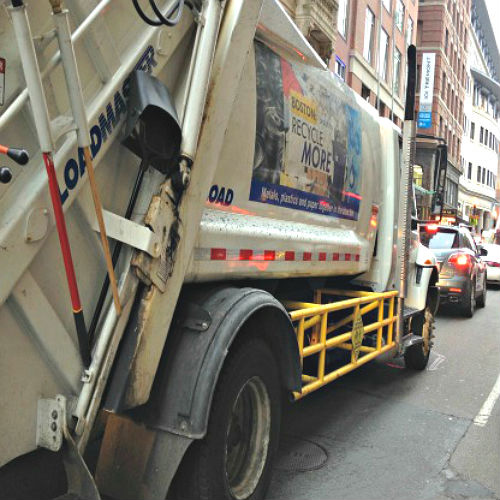
Mayor Marty Walsh is proposing a new safety ordinance for city-contracted trucks in Boston, a measure being widely watched after several cyclists have died in truck crashes. It is believed to be the first such ordinance in the nation.
Walsh, who took office in January, submitted an Ordinance to Protect Vulnerable Road Users to the Boston City Council earlier this week. The City Council was expected to take it up today in session.
If passed, the ordinance will require side guards, convex mirrors, cross-over mirrors, and blind-spot awareness decals on all vehicles over 10,000 pounds which are contracted with the city. The goal is to prevent truck accidents by giving drivers a better view around them. When trucks do not comply, fines start at $100 for the first offense and contracts can ultimately be terminated.
The Boston Cyclists Union called for these measures after a cyclist was killed in a Charlestown truck accident in April. It has released a fact sheet, “Safeguards Saves Lives.” According to the fact sheet, 4 percent of vehicles in the U.S. are trucks though they cause 11 percent of all bicyclist fatalities and 7 percent of all pedestrian fatalities.
Since 2010, 11 cyclists in Boston have died as a result of motor vehicle crashes, according to figures cited by Boston Magazine. Seven cases involved trucks. Here is another concerning figure: From 2009 to 2012, there were 1,700 confirmed cyclist incidents documented by Boston EMS emergency medical technicians and paramedics.
The City of Boston has been working on truck safety. Last year, the city began a pilot program, the largest in the nation. The Mayor’s Office of New Urban Mechanics and the city’s Public Works Department tested three different types of guards on 16 active vehicles driving the streets.
In April, the National Traffic Safety Board made similar recommendations to prevent tractor-trailer accidents.
About Breakstone, White & Gluck
The Boston personal injury lawyers at Breakstone, White & Gluck have over 100 years combined experience representing injured cyclists and pedestrians. We support efforts to make the roads of Boston safer and donate bike helmets for children each year, in Boston as well as Cambridge and Somerville and other communities. For a free legal consultation, visit 800-379-1244 or 617-723-7676 or use our contact form.
Defective Bean Bag Chairs Kill Two Children by Suffocation
More than two million bean bag chairs have been recalled after heartbreaking accidents in which children suffocated and died.
The Consumer Product Safety Commission (CPSC) announced last week that Ace Bayou Corp. of New Orleans, Louisiana has voluntary recalled 2.2 million bean bag chairs, including both traditional and L-shaped bean bag chairs.
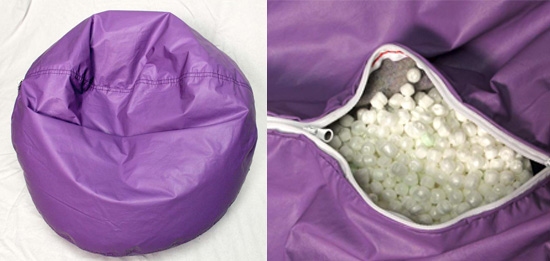
The bean bag chairs have zippers which can easily be opened, a violation of the CPSC’s voluntary standard. Children can crawl inside, become entrapped and suffocate from lack of air or choke on the chair’s foam beads.
Prompting the recall were the deaths of a 12-year-old boy from Texas and a 3-year-old girl from Kentucky. The children were found inside bean bag chairs after suffocating. The boy’s mother told the media that the bean bag chair had been in her son’s room for years and she never thought he would climb inside.
The CPSC instructs consumers to check for these bean bag chairs in their homes. For the full list of recalled models, see the end of this blog.
The chairs have two zippers. Consumers can contact Ace Bayou for a free repair kit to permanently disable the zippers. Consumers should take chairs which can be unzipped away from children.
The defective products were sold at Bon-Ton, Meijer, Pamida, School Speciality, Wayfair and Walmart and online at Amazon.com, Meijer.com and Walmart.com. They were sold prior to July 2013 for $30-$100.
Another option is to simply remove these products from your home altogether. Call Ace Bayou and ask them how to safely dispose the product. (Remember, you should never give someone a recalled product or resell it to anyone. Reselling a recalled product is against federal law.)
Bean bag chairs have a history of injuring children. In the 1990s, the CPSC received reports that 5 children died from suffocation inside bean bag chairs and 27 were injured but recovered. It then launched an industry investigation and recalled 12 million bean bag chairs. More than a dozen manufacturers were involved in that recall effort.
More Recall Information
CPSC Recall Notice Read More
Massachusetts Lawyers Weekly Features Breakstone, White & Gluck’s Bike Helmet Donations
Breakstone, White & Gluck was recently mentioned in Massachusetts Lawyers Weekly for our bike helmet donations to children and for attorney David White’s “Volunteer of the Year” award from Boston Bikes, a program of the City of Boston.
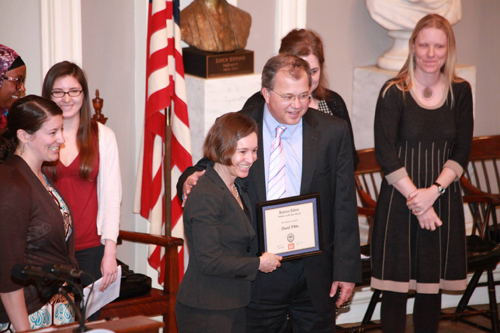 Photo credit: LivableStreets/www.livablestreets.info. Attorney David W. White of Breakstone, White & Gluck and Nicole Freedman, Director of Boston Bikes, during the 6th Annual Boston Bike Update at Faneuil Hall.
Photo credit: LivableStreets/www.livablestreets.info. Attorney David W. White of Breakstone, White & Gluck and Nicole Freedman, Director of Boston Bikes, during the 6th Annual Boston Bike Update at Faneuil Hall.
Read More
Pool Safety Starts with Your Pool Fence
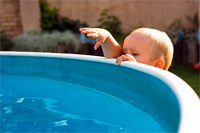
As a pool owner, you have a responsibility to secure your pool with a strong, adequate fence. Many property owners do so because it is the law and to prevent neighborhood children or trespassers from breaking in. But they may have a false security when it comes to friends, families and young children they invite over.
Many pool accidents and drownings actually involve invited guests, people we may know well and have over regularly. Let them enjoy your home, but block unrestricted and unsupervised access to your pool.
The Consumer Product Safety Commission (CPSC) conducted a survey of swimming pool accidents in Arizona, California and Florida. Data showed drowning was the leading cause of accidental death in and around the home for children under age 5. Most of these children – 75 percent – were between 1 and 3 years old.
Fewer than two percent of pool accidents resulted from children trespassing on the property. More often, children knew the pool owner, with 65 percent of accidents occurring in pools owned by an immediate family member. Another 33 percent happened in pools owned by relatives and friends.
More telling is what happened before these accidents:
- Most of the children were being supervised by at least one parent when they drowned
- Nearly half of the children were last seen in the house before the pool accident occurred
- Another 23 percent were last seen on the porch or patio, or in the yard
- Some 77 percent of children had been missing for 5 minutes or less when they were found
Adding an extra layer of fencing may make a difference in preventing these accidents.
Pool Fence Recommendations
- Self-Closing. A pool fence should be self-closing and self-latching. It should open from the pool side and should be maintained so it can easily latch.
- Fence Height. A pool fence should be at least four feet tall and four feet above the grade of the ground outside the fence.
- Release Mechanism. You want to prevent children from reaching the latch. When the release mechanism is less than 54 inches above the grade, the release mechanism for the gate should be at least 3 inches below the top of the gate and installed on the side facing the pool. Also, make sure there is no opening greater than ½ inch within 18 inches of the latch release mechanism.
- Bottom of the Fence. If your fence stands on a concrete surface, the clearance between the bottom of the fence and the ground should not exceed four inches. For fences on softer surfaces, such as grass, the maximum clearance is two inches.
- Fence Spacing. The space between the vertical fence slats should not exceed four inches.
- Chain Link Fences. For chain-link fences, the diamond-shaped openings should be no larger than 1 ¾ inches.
- Decorative Fences. Fencing with decorative openings should follow the same standard as chain link fences and not exceed 1 ¾ inch.
- Backyard Doors. Massachusetts requires pool alarms when doors from a home open into a pool enclosure area. For instance, if there are three sides of fencing around the pool and the home serves as the fourth side.
- Pool Alarms. Purchase a pool alarm even if you are not required to by law. Pool drownings happen quickly and often silently. A pool alarm interrupts that process and provides you warning if someone is entering the gate.
- Above Ground Pools. For above ground pools, build a fence on top of the structure as a barrier. Remove or lock the pool ladder when not in use. For another layer of protection, you can also add a fencing structure around the ladder and lock that when not in use.
- Pool Covers. Consider a power pool safety cover to add another layer of protection. Purchase one which conforms to the specifications in ASTMF 1346-91.
Related:
Safety Barrier Guidelines for Home Pools, Consumer Product Safety Commission
About Breakstone, White & Gluck
Our Boston personal injury lawyers have over 100 years combined experience handling personal injury and premises liability claims, including swimming pool accidents. If you or a family member has been injured, it is important to learn your rights. For a free legal consultation, contact us at 800-379-1244 or 617-723-7676 or use our contact form.
Talk to Your Loved Ones About Supervising Children by the Pool. This is the Most Important Job of Summer.
The long and lazy days of summer are finally here and many of us are spending them by the pool. We hope you enjoy these times with your friends and family. And please remember to think about safety.
Each year in the U.S., nearly 5,000 children under age 15 are treated for pool- or spa-related injuries at hospital emergency rooms, according to the Consumer Product Safety Commission (CPSC). Nearly 400 children under age 15 are killed in swimming pool and spa drownings. More than 75 percent of these children are under the age of 5 and the majority of these deaths occur at private residences. But injuries can happen at any pool where someone stops paying attention or is negligent, including hotel swimming pools, community centers and other places.
Prevent injuries this summer by talking about the rules of safety with your family and friends.
Pool Owners. You have a responsibility to keep your pool area safe for family and invited guests and to secure it from others. You must keep your pool behind a fence which is at least four feet tall and secures with a self-latching and self-closing gate. But we encourage you to go a step further. Try walking around your fenced-in pool area. Are there areas where a young child could easily get in on their own? If so, make adjustments.
If you have questions, a good resource is your town’s local building department.
Drain Covers. Keep children away from pool drains, pipes and other openings which could cause entrapment.
Home Spa Safety. If you have a home spa, install and use a child-proof locked safety cover to keep children out.
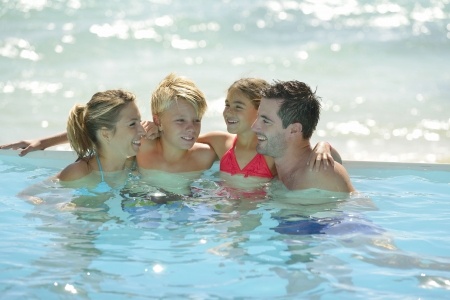
Watch Children Closely. Before the swimming season, learn CPR. Then when you head to the pool, set aside all distractions and watch the children. Avoid distractions such as reading, cell phone calls, and texting–supervision should be treated like a job.
When supervising young children, swim with them and practice “touch supervision.” For older children, watch them and be involved with them even if you are not swimming. Talk to them and let them know if they are doing something they should not be. If you are part of a group of adults watching children swim, designate someone the “pool watcher” so that the children are supervised at all times. But still supervise your own children at all times.
Likewise, at hotel and community pools, do not rely on lifeguards to watch your children.
Dress Children Appropriately. Make sure children are not wearing swimming suits or hair accessories that can get caught in pool drains or other openings.
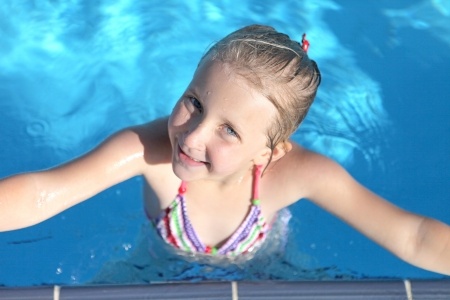
Poolside Toys. Many pool accidents involve diving board, sports equipment, rafts and pool slides. Always look before you use. If something looks unsteady, do not use it.
Many pools no longer have diving boards because homeowner’s insurance companies have stopped providing coverage for them. But if you are going to dive, make sure the water is at least 10 feet deep.
Avoid portable pool slides, inflatable toys and using backyard trampolines with the pool. These products may not be designed for use with a pool or may be defective. In one Massachusetts case, a Colorado woman visiting the state died in 2006 after she slid down a Banzai brand inflatable slide at a backyard pool. It partially deflated, causing her to strike her head on concrete by the pool. The Consumer Product Safety Commission later recalled 21,000 of the Banzai brand inflatable slides and continues to recall unsafe pool toys and equipment each year.
Broken Glass. Do not bring beer bottles and glass out to the pool. Serious accidents can happen if the glass breaks in or near the pool and someone steps in it. If there is broken glass in the pool, it will be invisible and therefore impossible to find safely. Beyond injury, you will have a lot of clean-up. First you will have to drain the pool and then you will have to sweep it thoroughly.
Read More
Breakstone, White & Gluck Makes Bike Helmet Donation to Somerville Schools
We want to share articles from the Somerville News Weekly and BostonNewsGroup.com about the CYCLE Kids program and our bike helmet donation to the Somerville elementary schools. CYCLE Kids is a Cambridge organization which provides curriculum that teaches riding skills, bike maintenance, road safety and nutrition. Locally, the curriculum is offered in Cambridge and Somerville schools as part of physical education classes.
Earlier this week, attorney Marc Breakstone attended a graduation ceremony for children finishing the curriculum at the Dr. Albert F. Argenziano School in Somerville. Breakstone, White & Gluck donated 325 helmets to Somerville schools.
“Our firm is honored to be associated with CYCLE Kids which does such an incredible job educating kids in bike safety and healthy lifestyle choices,” Breakstone said. “The energy, excitement and elation in that gym were inspiring and many people should be recognized. Our firm looks forward to continuing to support this effort for years to come.”
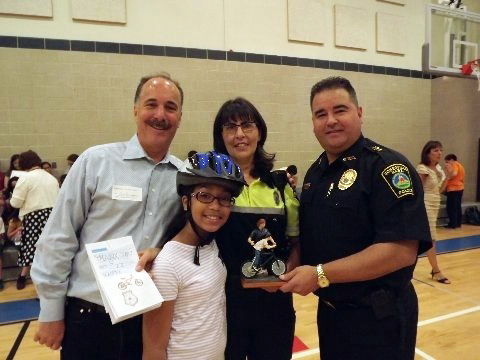
Attorney Marc Breakstone, Somerville Community Police Officer Marianne Manfra and Somerville Deputy Police Chief Michael Carbral with a graduate. Photo credit: The Somerville News Weekly.
 Fifth-graders at Somerville’s Dr. Albert F. Argenziano School graduating from CYCLE Kids program, joined by community officials.
Fifth-graders at Somerville’s Dr. Albert F. Argenziano School graduating from CYCLE Kids program, joined by community officials.
Participating in the event were Somerville Mayor Joseph Curtatone, Superintendent of Schools Anthony Pierantozzi, Deputy Police Chief Michael Cabral, Somerville Community Police Officer Marianne Manfra and CYCLE Kids Founder Julianne Idlet.
Breakstone, White & Gluck is donating bike helmets to cycling organizations throughout the Boston area in 2014. It is the second year we have made these donations and expect to donate 2,000 helmets by year’s end. We have donated helmets to Boston Bikes’ Roll It Forward, CYCLE Kids, the Kiwanis Club of Somerville and Worcester Earn-a-Bike along with other organizations.
It is our second year partnering with CYCLE Kids. Last year, we partnered with the organization and donated 300 helmets to fourth-graders in the CYCLE Kids program in Cambridge.
While CYCLE Kids is based in Cambridge, it is a national organization that promotes healthy lifestyles for youth and families. CYCLE Kids uses the bicycle as the vehicle to teach the importance of adopting healthy, active lifestyles. The CYCLE Kids curriculum teaches riding skills, bike maintenance, and road safety. In addition, the curriculum provides practical skills based on a child’s existing knowledge of nutrition such as portion control and how to balance a meal. The CYCLE Kids curriculum is present in 8 states, with 38 programs and reaches 3,000 children a year.
MassBike Video Answers Safety Questions for Cyclists and Drivers
MassBike recently released a new training video which answers many common questions about the laws for cyclists and drivers. The video is very well-done and offers some good re-enactments. We encourage you to watch it.
The 11-minute video is called Shifting Gears: Bicycles & Public Safety and was developed by MassBike in partnership with the Massachusetts Department of Public Health, the Boston Police Department and Boston Police Academy. The video was developed to train police officers on how to enforce the law.
The video explains M.G.L. c. 85, § 11B and M.G.L. c. 90, § 14, the laws regarding a bicyclist’s rights on the road and the obligations of motorists. A few topics covered: where a bicyclist is allowed to ride, the illegal practice of dooring a bicyclist, and how drivers must yield to cyclists. It also touches on sidewalk riding, red lights and stop signs (cyclists have to stop too) and other areas of the law.
Breakstone, White & Gluck Supports Bike Safety Events in East Boston and East Arlington
Boston has some hard-working community bike programs which help children and their families learn the rules of safety. We recently supported two of these community groups, Boston Bikes and East Arlington Livable Streets Coalition.
Boston Bikes Bike Giveaway in East Boston. On June 12, the Boston Bikes’ Roll It Forward program gave away 40 bikes to children at the Orient Heights Boston Housing Authority Development. Children ages 5-7 were invited to sign up to receive a bike. Boston Bikes collects and repairs used bikes to distribute through its Roll It Forward program, which serves Boston residents who do not have access to a bike.
Children who participated received a new bike along with a new bike helmet. Attorney Sam Segal of Breakstone, White & Gluck helped fit the children for new helmets and spoke to them about the importance of wearing one while riding. Then, the Boston Bikes staff and volunteers taught the children safe riding techniques. Afterward, each child received a certificate showing they had completed safety training.
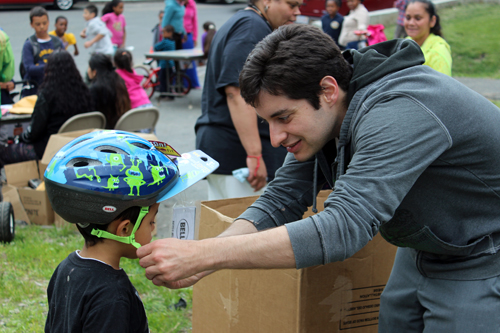 Attorney Sam Segal of Breakstone, White & Gluck helps fit bike helmets at a Boston Bikes event at Orient Heights Boston Housing Authority development.
Attorney Sam Segal of Breakstone, White & Gluck helps fit bike helmets at a Boston Bikes event at Orient Heights Boston Housing Authority development.
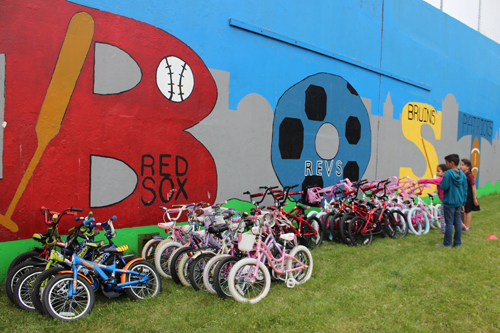 Boston Bikes event at Orient Heights Boston Housing Authority development.
Boston Bikes event at Orient Heights Boston Housing Authority development.
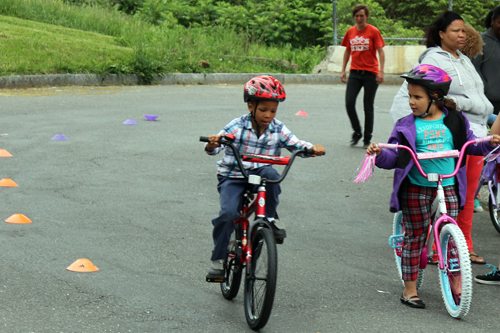 Boston Bikes event at Orient Heights Boston Housing Authority development.
Boston Bikes event at Orient Heights Boston Housing Authority development.
Thompson School in East Arlington. On June 4, the East Arlington Livable Streets Coalition organized a bike safety training for 98 fourth- and-fifth graders at Thompson elementary school. A representative from MassBike spoke to the children about safe riding techniques, proper helmet fitting and bike maintenance. Phil Goff of the East Arlington Livable Streets Coalition also spoke to the children about wearing bike helmets and safety. Breakstone, White & Gluck donated bike helmets to children who showed up without one or needed one that properly fit.
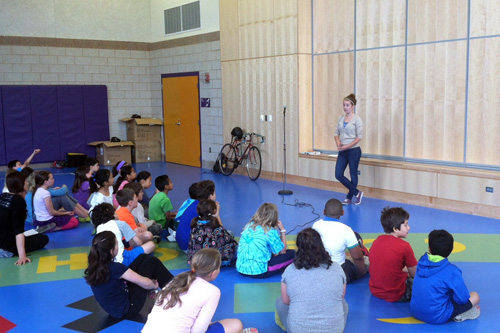 East Arlington Livable Streets Coalition event at Thompson School in East Arlington.
East Arlington Livable Streets Coalition event at Thompson School in East Arlington.
Learn more about Boston Bikes’ Roll It Forward and East Arlington Livable Streets Coalition.
Read More

